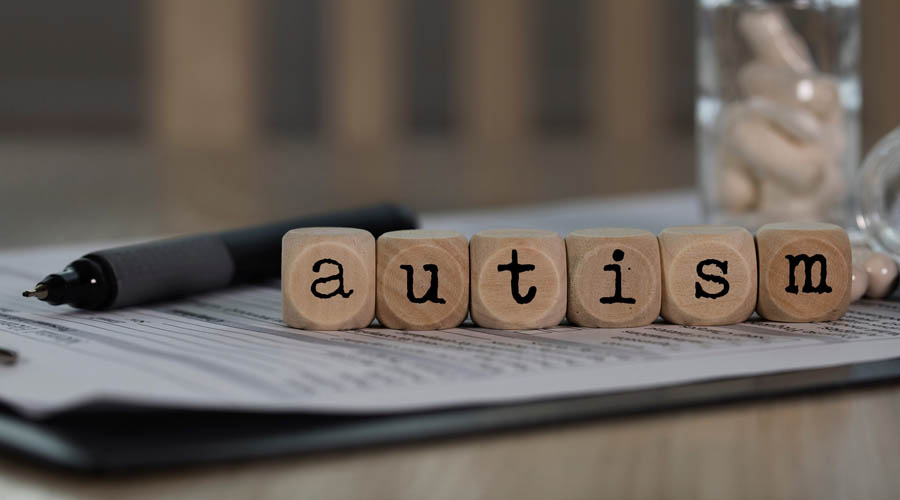Diagnostic criteria for the diagnosis of Autism Spectrum Disorder
By: Dr. Puja Kapoor
Autism spectrum disorder (ASD) is a developmental disorder characterized by difficulties with social interaction and communication, and by restricted and repetitive behavior. Parents often notice signs during the first three years of their child’s life. These signs often develop gradually in two- third of the children, and in one -third of children, worsening/regression in their communication and social skills occur after reaching developmental milestones at a normal/ slightly delayed pace.Diagnosing autism spectrum disorder can be difficult because there is no medical test, like a blood test, or MRI Brain, to diagnose the disorder. Diagnosis is done based on child’s developmental history and behavior .Autism being a complex disorder, the assessment should be done by multidisciplinary team who besides the pediatric neurologist, developmental pediatricianshould include a psychologist, a special educator, an occupational therapist, an ABA therapist and an audiologist and speech therapist .
Clinical Evaluation
It has been found that the earliest symptoms are absence of normal behavior (not presence of abnormal ones). The child lags interest in the surroundings. There are no reciprocating expressions or social smile. There is no joint attention. He is often “lost in his own world”. There is no response to name call or following of commands. But there is response to sound of his liking.There is no contextual speech but jargon, out of context speech. Other features include extremes of temperament and behavior ranging from marked irritability to alarming passivity. One third of children show regression of social skills and/ or speech. Gross Motor milestones are generally well preserved. The height, weight, physical appearance does not show any deviance from the normal. The child is a mix of varying features and hence now renamed as autism spectrum disorder rather than autism itself.
Screening
According to Indian Academy of Pediatrics, all children should be screened by a standardized autism screening tool at 18 and 24 months of age. There are various tests which are available for screening of autism spectrum disorder.
1. The Modified Checklist for Autism in Toddlers revised (M-CHAT-R/F). It is a freely available and downloadable 20 point questionnaire (in multiple languages) to be completed by parents, under the doctor care, which takes about 10 minutes to complete. It’s intended for toddlers between 16 and 30 months of age. It uses a simple scoring procedure based on passed/ failed items. For the first section, a response of “no” for all questions except 2, 5, and 12 indicate risk of autism spectrum disorder. A response of “yes” indicates ASD risk for the remaining three questions.
For the follow-up section, the flowchart format will direct in determining whether or not the child’s behavior is suggestive of ASD. If the parent describes abnormal behavior, the child will fail that item.
A total score of 2 and below on the first part of the M-CHAT indicate low autism risk, but children under 24 months should nevertheless be tested again after their second birthday. A total score of 3-7 indicates medium risk and prompts administration of the follow-up form. Even with the follow-up form, some children who fail the M-CHAT will not be diagnosed with ASD, but may still be at risk for other developmental disorders. A total score of 8 or higher indicates high autism risk, and the follow-up form can be bypassed for immediate referral to a professional for diagnosis.
The follow-up form has its own scaling. If the child fails at least two items, the child should be referred to a professional for diagnosis.
Like all questionnaires, the way the test is administered can have an effect on the final score. Hence it has to be performed under a qualified personal for the correct interpretation of the results.
2.The Social Communication Questionnaire: The SCQ is a brief, 40-item, parent-report screening measure that focuses on items relating to ASD symptomatology to be observed by a professional for children 4 years and above.It is available in many Indian languages.
Each item in the SCQ requires a dichotomous “yes”/“no” response, and each scored item receives a value of 1 point for abnormal behavior and 0 points for absence of abnormal behavior/normal behavior. The first item—“Is she/he now able to talk using short phrases or sentences?”—is not scored, but rather determines whether six items relating to abnormal language are assigned. Only “verbal” children (i.e., children with a “yes” response to the first question) are assigned the six items relating to abnormal language and can, thus, can score a total of 0–39 points; “non-verbal” children (i.e., children with a “no” response to the first question) are not assigned the six items in relation to abnormal language and so can score a total of 0–33 points.
3.The Trivandrum Autism Behavior Checklist (TABC) : The checklist was developed at the Child Development Centre at Trivandrum, Kerala.It has a sensitivity of 80%, and specificity of 91.1%. The TABC screening test is divided into four components; social interaction, communication, behavioral characteristics and sensory integration. The scoring based on the responses of the four components are never (1), sometimes (2), often (3) and always (4). The severity of autism is graded on the basis of scoring: 20-35 > non autistic, 36-43 > mild to moderate autism, 44 and above is severe autism
Diagnosis
There are multiple diagnostic tests described for the diagnosis of ASD. A few of the standardised tests are given below:
1. Diagnostic and Statistical Manual of Mental disorders – fifth edition (DSM-5)It is considered the gold standard for diagnosis of ASD.
Diagnosis of ASD is made as per the DSM-5based on 2 criterion:
- Persistent deficits in social communication and social interaction across multiple contexts, currently or by history
- Restricted, repetitive patterns of behavior, interests, or activities, as manifested by at least two of the criteria, currently or by history.
Symptoms must be present in early childhood but may not become fully manifest until social demands exceed capacities. Symptoms need to be functionally impairing and not better described by another DSM-5 diagnosis.
Symptom severity for each of the two areas of diagnostic criteria is now defined. It is based on the level of support required for those symptoms and reflects the impact of co-occurring specifiers such as intellectual disabilities, language impairment, medical diagnoses and other behavioral health diagnoses.
Rett syndrome is a discrete neurologic disorder and is not a sub-diagnosis under ASD, although patients with Rett syndrome may have ASD.
2.The INCLEN diagnostic tool for ASD (INDT-ASD) :Developed in India this tool is to be used by trained personnel and is based on both history from primary caregivers and direct observation of a child aged 2 to 9 years. The tool has been standardized and validated using the CARS. The INDT-ASD is available in English, and many local Indian languages. This facilitates interviewing of caregivers as well as interaction with the child. The tool also clearly indicates that in cases where the history obtained is incongruent with observations of the child, which information is to be given precedence over the other.
3.The Indian Scale for Assessment of Autism (ISAA): The National Institute for Mentally Handicapped (NIMH) developed ISAA for diagnosing and measuring the severity of autism in 2009. This scale was based on CARS and has 40 items divided under six domains – social relationship and reciprocity; emotional responsiveness; speech, language and communication; behavior patterns; sensory aspects and cognitive component. The items are rated from 1 to 5, increasing score indicating increasing severity of the problem. A score of <70 indicates no autism, 70-106 (mild autism), 107-153 (moderate autism), and >153 (severe autism). It takes about 15 to 20 minutes for administration of ISAA. The ISAA was devised with the aim of quantifying the severity of autistic symptoms so as to enable measurement of associated disability. It has a sensitivity of 93.3, specificity of 97.4 respectively.
4.The Autism Diagnostic Observation Schedule (ADOS) The protocol consists of a series of structured and semi-structured tasks that involve social interaction between the examiner and the person under assessment. The examiner observes and identifies segments of the subject’s behavior and assigns these to predetermined observational categories. Categorized observations are subsequently combined to produce quantitative scores for analysis. Research-determined cut-offs identify the potential diagnosis of classic autistic disorder or related autism spectrum disorders, allowing a standardized assessment of autistic symptoms. It has also been validated and translated into Hindi and Bengali.
5.The Autism Diagnostic Interview (ADI):It is structured interview conducted with the parents of individuals who have been referred for the evaluation of possible autism or disorders. It has a sensitivity and specificity of 92% and 89% , respectively. Itis a tool that can be used for diagnosis, albeit having significant cost and usage-time implications.
All children with ASD should undergo a physical examination, and screening for hearing and vision. Assessment of cognitive ability and adaptive skills is recommended for planning intervention, with respect to observed social-communication difficulties relative to overall development. Measurements of receptive and expressive vocabulary (using a tool like Receptive-Expressive Emergent Language Scale, REELS) and social-pragmatic skills are essential to have a complete diagnostic impression and an informed intervention plan.Occupational and physical therapy evaluations should be conducted to evaluate sensory and/or motor difficulties.
Thus, diagnosis of ASD requires a multidisciplinary approach for formulation of a individualised plan for the better development of the child under the care of a experienced professional.

